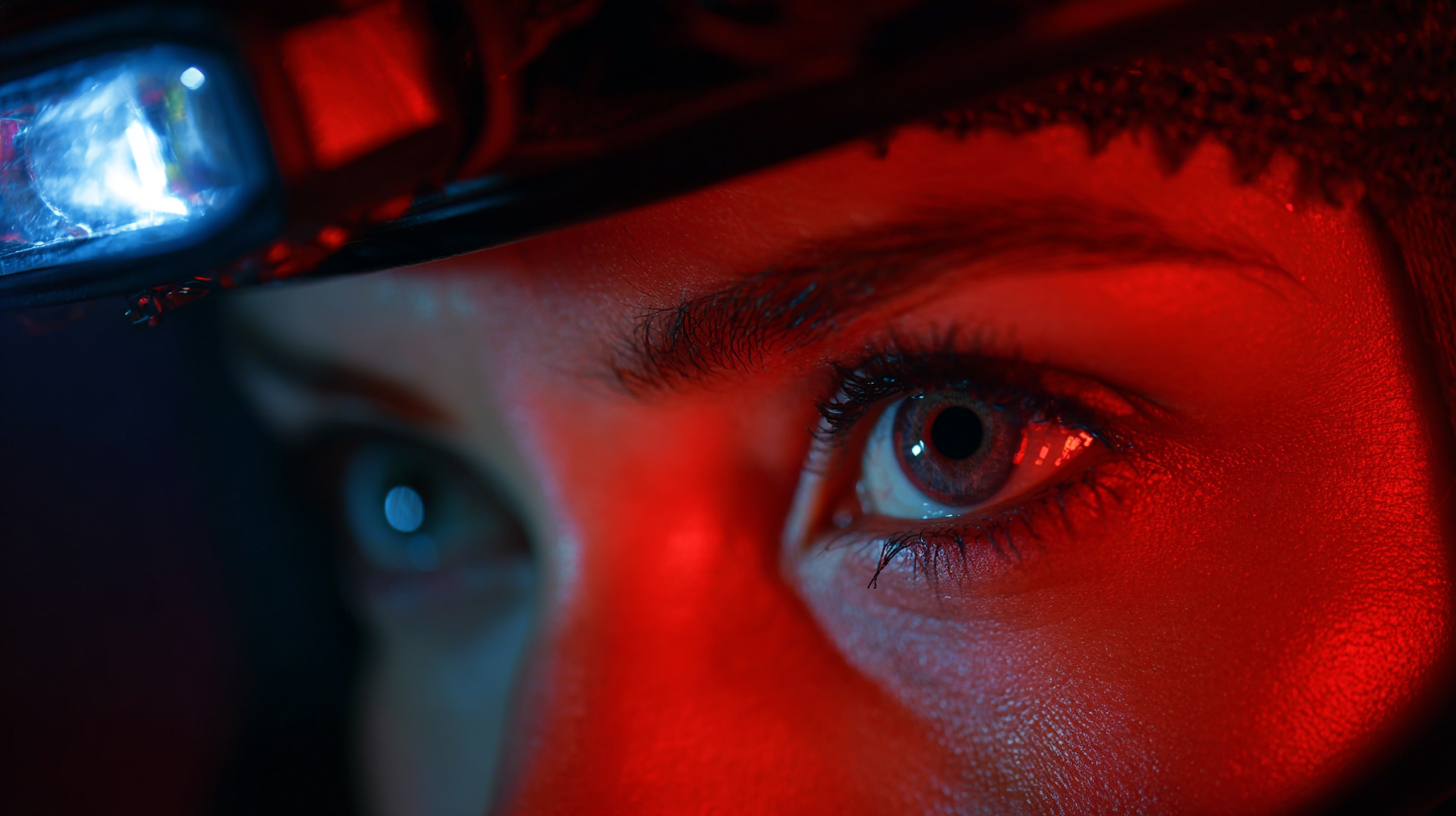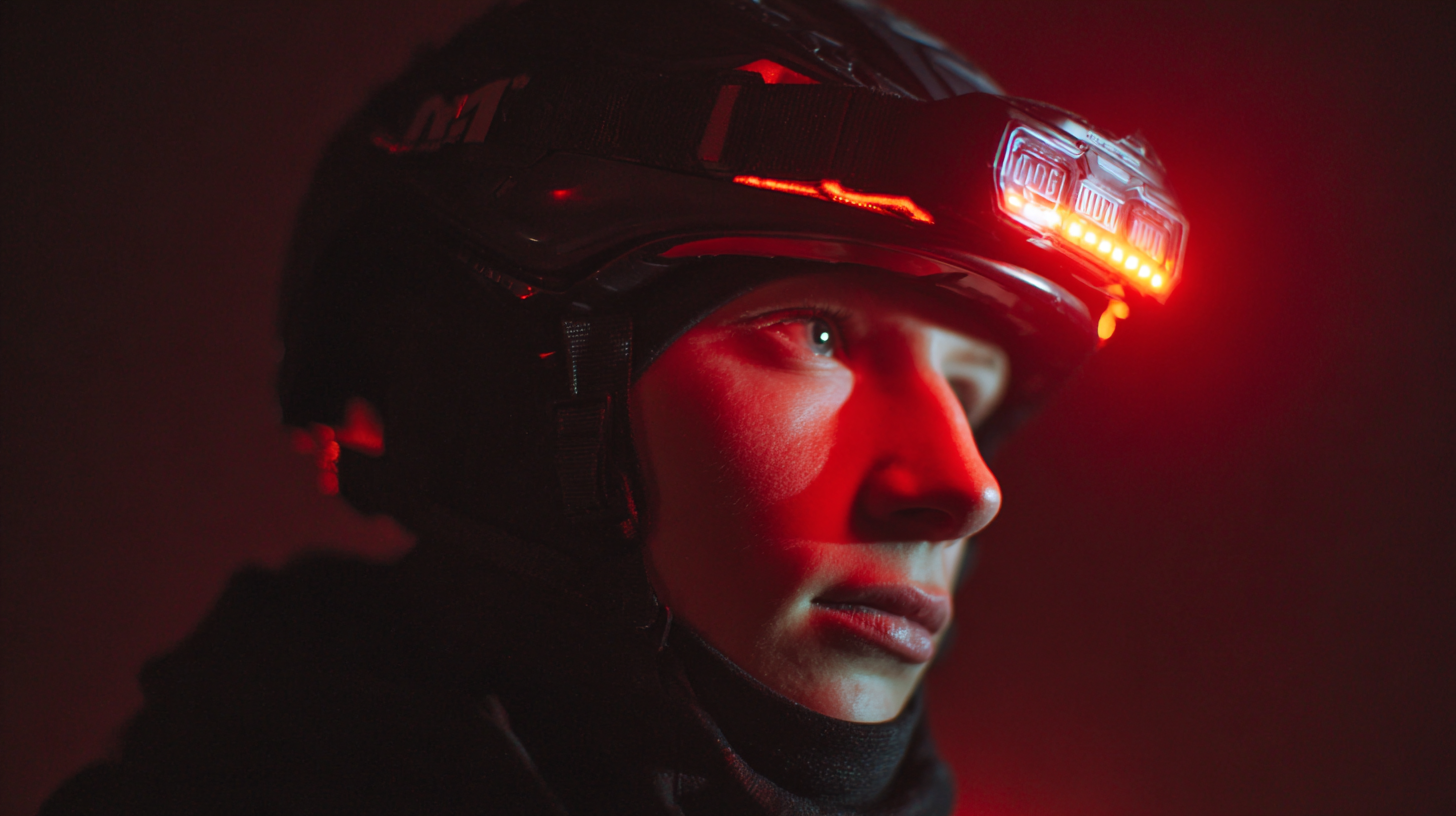The Future of Innovative Illumination with the Best Red Light Headlamp
In an era where innovation drives outdoor technology, the Red Light Headlamp stands out as a beacon of advanced illumination solutions. As indicated by recent industry reports, the headlamp market is projected to grow at a compound annual growth rate (CAGR) of 5.6% from 2023 to 2028, underscoring the increasing demand for versatile and efficient lighting options. The unique attributes of Red Light Headlamps, particularly their ability to preserve night vision while providing adequate lighting for various activities, position them at the forefront of this trend. With outdoor activities and emergency preparedness gaining traction among consumers, integrating red light technology will be pivotal in redefining user experiences and enhancing safety in low-light conditions. As we advance toward 2025, the convergence of innovation, sustainability, and practicality shapes the future landscape of illumination, and Red Light Headlamps are set to play a critical role in this evolution.

The Rise of Red Light Technology in Headlamps: A 2025 Market Overview
As we look forward to 2025, the emergence of red light technology in headlamps is poised to revolutionize the way outdoor enthusiasts and professionals harness illumination in their activities. Red light offers distinct advantages over traditional white light; it preserves night vision, minimizes disruption to wildlife, and enhances stealth during nighttime pursuits. This shift is particularly significant for campers, hunters, and photographers who require subtle illumination without compromising their environment or their own visibility.
The growing popularity of red light headlamps is already influencing market trends, with numerous brands incorporating this technology into their product lines. Innovations are emerging, from adjustable RGB settings to energy-efficient LEDs, catering to a diverse range of user preferences and needs. As manufacturers invest in research and development, consumers can expect to see even more advanced features and applications, making red light headlamps an essential tool for various outdoor adventures by 2025.
The rise of red light technology not only signifies a shift in user demands but also highlights a broader movement toward sustainable and practical lighting solutions.
Key Innovations Driving the Future of Red Light Headlamps
The future of innovative illumination is shaping up with advancements in red light headlamps, driven by the latest innovations in micro LED technology. As showcased at SID 2025, these diverse applications expand the possibilities of lighting beyond traditional uses. Micro LEDs are not only enhancing brightness and energy efficiency but are also miniaturizing designs, which opens doors for more compact and versatile headlamp models. Reports suggest that the global micro LED market is expected to reach approximately $8 billion by 2025, indicating a strong trend towards these advanced lighting solutions.
One of the key innovations in this realm is the integration of digital technologies in automotive lighting systems. Digital Matrix LED headlights, which allow for highly adaptive lighting patterns, enhance vehicle safety by improving visibility without blinding other drivers. This connectivity also facilitates vehicle-to-infrastructure communication, which is critical as we approach a future with more autonomous vehicles. Moreover, the introduction of a fourth traffic light color aimed at improving the interaction with autonomous systems is another step towards safer traffic environments. These advancements are not just about aesthetics; they are integral to creating smarter, safer, and more efficient transportation solutions.
The Future of Innovative Illumination with the Best Red Light Headlamp - Key Innovations Driving the Future of Red Light Headlamps
| Innovation Feature | Description | Benefit | Expected Impact |
|---|---|---|---|
| Energy Efficiency | Utilization of advanced LED technology to minimize energy consumption. | Longer battery life and reduced frequency of battery replacements. | Enhances user convenience and sustainability. |
| Light Spectrum Control | Adjustable light spectrum settings for different environments. | Optimizes visibility while preserving night vision. | Improves usability for outdoor activities and professional applications. |
| Smart Connectivity | Integration with mobile apps for personalized settings and usage tracking. | Enhanced user experience and control over light configurations. | Fosters innovation in smart outdoor equipment. |
| Durability | Rugged designs with water and impact resistance. | Increased reliability in harsh conditions. | Promotes confidence among users in outdoor and industrial settings. |
| Light Weight | Use of lightweight materials for easy wearability. | Improves comfort for extended use. | Attracts a wider audience across various user demographics. |
Comparative Analysis: Red Light Headlamps vs. Traditional Lighting Solutions
The technological evolution of lighting solutions has led to an increasing interest in red light headlamps as compared to traditional lighting methods. Red light headlamps provide distinct advantages, particularly in settings requiring careful light management, such as during plant cultivation. Research indicates that utilizing red LEDs can enhance plant growth while minimizing light interference, as they efficiently target specific wavelengths crucial for photosynthesis. This capability highlights a stark contrast to conventional incandescent and fluorescent lights, which may produce excessive heat and can disrupt sensitive growth environments.

When considering lighting for various applications, it’s essential to evaluate energy efficiency as well. Red light headlamps utilize significantly less power than their traditional counterparts, leading to lower operating costs and reduced environmental impact. With LED technology, users can achieve a longer lifespan—up to 25 times more than typical bulbs—while maintaining high light quality.
Tips:
1. For plant cultivation, opt for adjustable red light headlamps that allow you to control intensity levels,
ensuring you meet the needs of your specific plants while conserving energy.
2. When choosing lighting solutions, always consider the efficiency ratings and longevity of the products,
as they directly impact both energy consumption and replacement frequency.
User-Centric Design Trends in the Next Generation of Headlamps
As the demand for high-quality headlamps continues to grow, user-centric design trends are shaping the next generation of illumination tools. A recent survey by the Outdoor Industry Association found that 73% of outdoor enthusiasts prioritize user comfort and ergonomic features when selecting headlamps. This shift emphasizes the importance of designs that cater not only to functionality but also to the user experience. Innovations such as adjustable headbands, lightweight materials, and moisture-resistant designs are becoming standard, providing users with enhanced usability during extended periods of use.

Moreover, advancements in technology are enabling headlamp manufacturers to incorporate features that resonate with modern consumers. According to a report by the International Dark-Sky Association, there is an increasing preference for red light functionality, which helps preserve night vision and minimize disruption to nocturnal wildlife. Enhanced battery life, smart connectivity, and customizable lighting settings are additional features that consumers are beginning to expect. As brands respond to these preferences, integrating sustainable practices and eco-friendly materials is becoming integral to product development, reflecting a broader industry trend towards environmental responsibility in the outdoor gear sector.
Practical Applications and Benefits of Using Red Light Headlamps in Various Environments
Red light headlamps are rapidly gaining traction in various sectors due to their unique advantages over traditional white-light headlamps. These devices emit a wavelength typically between 600-650 nanometers, which has been shown to preserve night vision and minimize disruption to the surrounding environment. According to a study conducted by the Journal of Optics in 2021, red light can help users maintain their natural night vision, making it indispensable for activities like astronomy, hunting, and tactical operations.
In practical applications, red light headlamps are increasingly favored in situations where visibility is crucial, but stealth is essential. For example, a study by the National Park Service documented that wildlife observing is significantly improved when using red light, as it does not startle animals, thereby allowing for closer and more sustainable encounters. Moreover, in emergency rescue operations, red light can help search teams to remain discreet while navigating in low-light conditions. The versatility of red light headlamps makes them valuable tools in diverse environments, from deep forests to remote caves, enhancing safety and effectiveness for users who rely on specialized lighting solutions.
